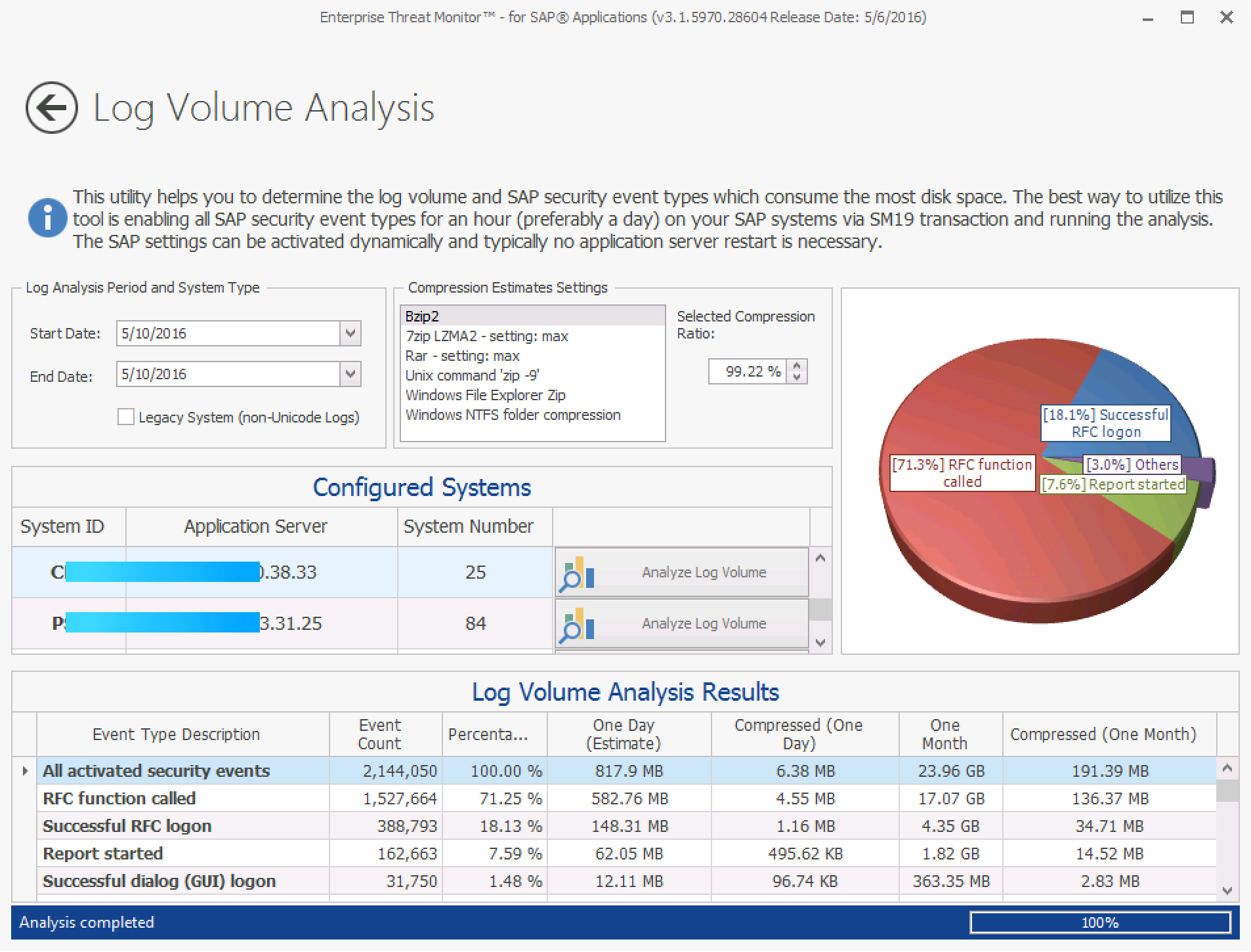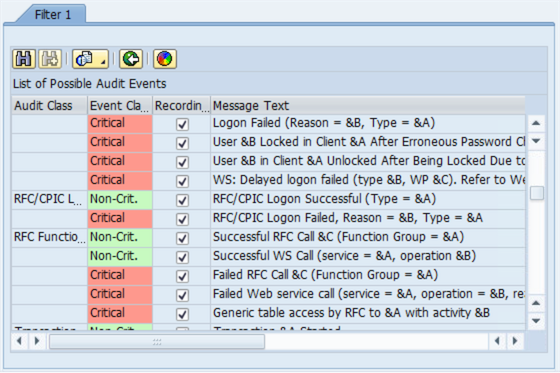Analyzing the results: Two real-life PROD SAP systems:
When you enter the connection information of your system and run Enterprise Threat Monitor, you’ll get results similar to the following:

What does this tell us?
In the Log Volume Analysis Results section, you can see the total number of logs for the selected period and monthly estimated log sizes for storing logs, compressed and uncompressed, for each security log event type.
The example above is a production ERP with ~10.000 SAP users. The system has all security audit event types active for all clients and users. In the above case, storing logs for that month is expected to take around 20 gigabytes of disk space uncompressed and around 200MB compressed.
The following is taken from another SAP system, the production BW system, which has the same settings applied:

On this system monthly estimate is around 14GB uncompressed, 111MB compressed.
If you already have enough disk space for handling this kind of data volume, you should simply activate all of the event types right away. That’s the simplest and best setting for security.
Which SAP security audit log event type consumes the most disk space?
There are around 87 event types which you can activate in the advanced view of SM19 transaction (latest systems may have slightly more). The occurrence of each event type in the audit logs is always different. Since we are interested in the big fish, we can focus on the ones which generate the most events. The following shows the event distribution of the top three items:

For the two production SAP systems in our example, the data shows that 3 event types (successful RFC calls, successful RFC logons and successful start of reports) consume the biggest portion – 97% – of the disk space whereas all other ones in total consume only around 3%. So, all failed and successful logs of the remaining 84 event types (out of 87) only results in 800MB per month for two large PROD systems (uncompressed) or 10MB/month compressed.
This brings us to a very simple conclusion: It is not worth the political fight for discussing the 3% area. On these systems, you should simply activate all log types other than successful RFC calls, successful RFC logons and report starts as the first step!
When you run the analysis on your system, the results can be slightly different. E.g. if you run a system which utilizes web services extensively then you may see that the Successful Web Service Call (CUV) event type generates over 10% of the overall logs. As always, the best assurance is running the analysis on your environment and building your strategy based on your own information.
The activation of security logs does not require a restart of the application server, it can be done instantly. This will also make your auditors and security teams pleased without you having to worry about the disk space! I’m sure they come up with a lot of requests from you regarding various security topics. At least now you have one item you can easily tell them “We cover 96% based on recent changes in production” which may help you leveraging your stance in other security topics.
->>> Analysis Update – 40 Billion SAP Security Audit Log Events
The following data is based on the analysis of close to 18 months of security events of over 100 SAP systems (SIDs). The results confirm the above numbers:
| RFC function called |
70.6% |
| Successful RFC logon |
15.6% |
| Report started |
8.6% |
| Successful dialog (GUI) logon |
2.0% |
| Transaction started |
1.9% |
| Others |
1.3% |
Disabling the top three event types would result in missing very important events for security. Therefore, not recommended.
SAP Security Audit Log Sizing Requirements for 100+ SAP systems:
– Based on the example above, for a period of 18 months, the data stored by Enterprise Threat Monitor is close to 134 GB in total. This data is compressed. Storing it uncompressed would require 16 TB of disk space.
– The customer stores only 30 days of raw logs on SAP application server instances. This allows them to use SAP’s tools when there is an incident.
– Customer has only 850 GB stored on SAP instances for the mentioned 30 days (avg. 8GB per SID), older logs are deleted after 30 days (all logs are archived by Enterprise Threat Monitor on an separate server in parallel).
We hope this information gives some indicators what to expect when planing switching on SAP security audit log events.




